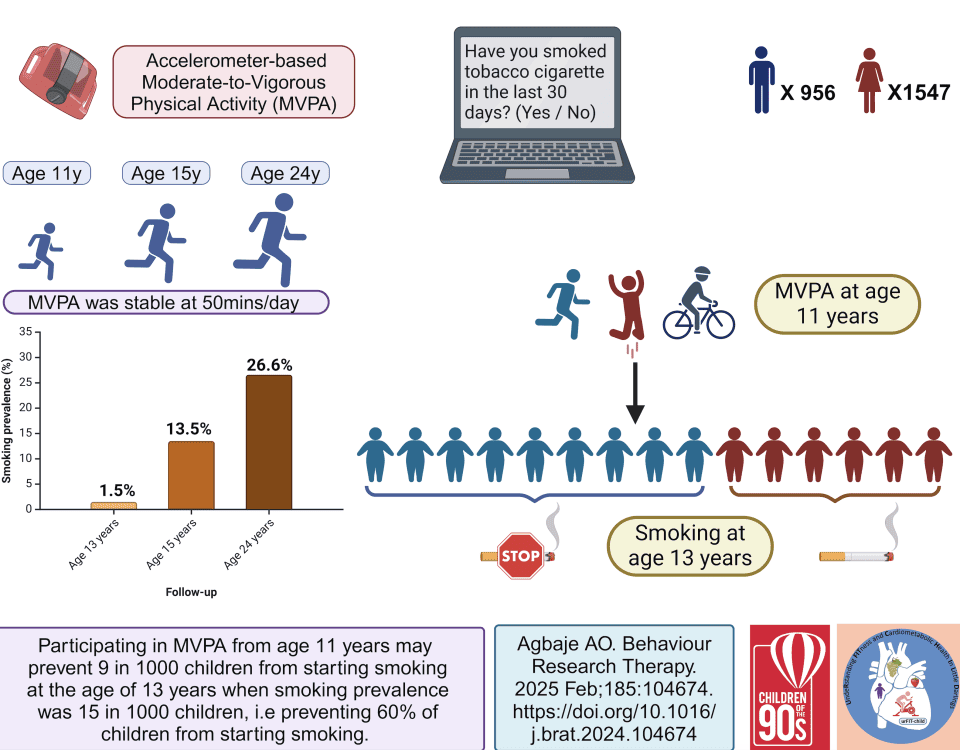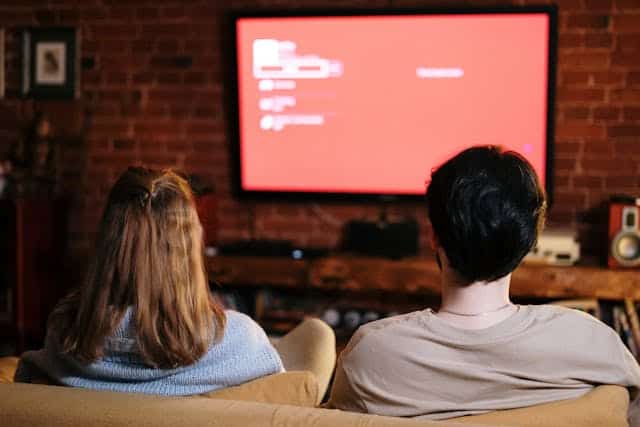
Lifestyle interventions to reduce sedentary behaviour in clinical populations: A systematic review and meta-analysis of different strategies and effects on cardiometabolic health
May 5, 2021
Workplace sitting is associated with self-reported general health and back/neck pain: a cross-sectional analysis in 44,978 employees
May 19, 2021Today’s blog is provided by Emily Draper, Josh Causey, Prashil Thaker, Lauren Bates, and Gabriel Zieff describing two new papers from the Cardiometabolic Lab at the University of North Carolina at Chapel Hill titled “COVID-19 Impact on Behaviors across the 24-Hour Day in Children and Adolescents: Physical Activity, Sedentary Behavior, and Sleep” and “Targeting sedentary behavior as a feasible health strategy during COVID-19“. More about the authors of the blog can be found at the bottom of this post.
Although necessary to mitigate the spread of COVID-19, virus-related social restrictions have led to a rise in negative lifestyle behaviors, including physical inactivity, defined as not meeting the Physical Activity Guidelines (PAG) of 75 minutes/week of vigorous or 150 minutes/week of moderate activity, and sedentary behavior, which is any waking activity in a seated or supine position < 1.5 metabolic equivalents (1, 3). These factors are associated with decreased cardiometabolic and mental health. Poor cardiometabolic health has a number of long-term consequences, and it has been shown to contribute to more severe COVID-19 outcomes (1, 2, 4, 9). Negative lifestyle behaviors related to the pandemic and social restrictions may be mitigated by a healthy lifestyle involving increased physical activity and reduced sedentary behavior. However, successfully encouraging individuals to adhere to an exercise routine has always been a daunting task, even before COVID-19 restrictions. While the challenges of promoting moderate to vigorous physical activity have been further exacerbated during the pandemic, sedentary behavior can likely be intervened upon more effectively than traditional exercise during COVID-19, as it is less susceptible to factors typically associated with health disparities such as race and socioeconomic status and less dependent on use of public spaces like gyms (1, 5).
Research has shown heightened sedentary behavior among adults during the pandemic as a result of remote working, leading to less movement to, from, and around the workplace (1, 6). A combination of remote working, social distancing, and self-isolating at home have largely interrupted the normal routines of the past. Thus, sedentary time has likely increased at the expense of traditional light, moderate, and vigorous physical activity for many people, as well as in individuals who still abide by the PAG during the pandemic. Sedentary time and physical inactivity are distinct risk factors for cardiometabolic disease, and importantly, achieving recommended physical activity levels does not negate the detrimental effects of elevated sedentary behavior (1, 7). Similar to physical inactivity, strong longitudinal associations exist between sedentary behavior and cardiometabolic disease and all-cause mortality, highlighting the need for sedentary behavior reduction strategies during COVID-19.
Additionally, sedentary behavior and physical inactivity have been implicated in poor mental health outcomes including anxiety and depression (1, 8). The pandemic and its restrictions have perpetuated harmful cycles of elevated mental stress (1, 10). This stress can exacerbate poor lifestyle behaviors, including sedentary behavior and physical inactivity, further adding to the unhealthy cycle. Thus, given its close ties with poor lifestyle behaviors in increasing cardiometabolic disease risk, mental health has become an even more pressing concern.
The increase in sedentary behavior, a consequence of the pandemic, are not only negatively affecting working adults, but children and adolescents too.
The Physical Activity Guidelines, per the CDC, recommend greater levels of activity for children (5-12 years old) and adolescents (13-17 years old) than for adults. Both groups are recommended to achieve at least 60 minutes of moderate to vigorous intensity activity and several hours of light activity, as well as under 2 hours of recreational screen time per day. The pandemic has led to disrupted behaviors across the entire 24-hour day among children and adolescents, including physical activity, sedentary behavior, and sleep. Leisure screen time has increased significantly for children due to limited availability of outdoor recreation, sports, and other group activities and school closures (2, 13, 15). With respect to sleep, increased screen-based sedentary behavior negatively influences sleep by disrupting circadian rhythms and biological clocks. Like physical inactivity and sedentary behavior, insufficient sleep is known to exacerbate cardiometabolic disease risk, which can begin as early as childhood (2, 11, 14).
Just as physical activity is associated with numerous cardiometabolic health benefits for children and adolescents, it also plays a vital role in emotional and psychological regulation (2). Sedentary behavior negatively influences long-term psychological health in the general population, and evidence suggests that such behaviors will have similar outcomes in children and adolescents as well. Additionally, insufficient sleep can lead to anxiety or mood swings (2, 12). These negative mental effects related to COVID-19 have perpetuated poor lifestyle factors, suggesting a potential detriment to the future health of today’s children.
The socioecological model provides a framework to understand the determinants of behavior change and a lens through which solutions to counteract increased sedentary behavior and modify other poor lifestyle factors can be devised.
The socioecological model examines behavioral determinants at multiple levels of the environment: individual, social environment, physical environment, and policy level determinants that must be considered in the context of promoting behavior change. At an individual level, strategies to interrupt sedentary time may include short activity bouts such as 2-3 minute walks, resistance band exercises, and jumping jacks. Physical activity monitors or smart watches can also help individuals track activity and stand time, and they can be useful reminders to stand up or move around. Performing active tasks enjoyable to the individual is ultimately paramount, as this will encourage greater adherence and thus, overall sustained reduction of sedentary behavior during the pandemic (1, 2, 16). At the level of the social environment, social support plays a key role in sedentary interruption. This can include group or team standing breaks in virtual meetings or family standing or dancing competitions for children (1, 2, 17). Parents also should make an effort to limit screen time of their children to reduce leisure sedentary time (2, 18). At the level of the physical environment, standing desks are currently an effective strategy for minimizing sedentary time both for working adults and for school-aged adolescents (1, 2, 19). Lastly, at a policy level, municipalities should consider implementing measures to encourage physical activity, such as making available accessible, socially distant outdoor space (1, 19). For children, schools and community centers could play a larger role in educating parents about the importance of breaking up sedentary time for their children and instruct teachers about ways to teach this through online learning. (2, 18)
COVID-19 restrictions have exacerbated the already prevalent public health issues of physical inactivity and sedentary behavior (1, 20). Though vaccine dissemination is increasing, and cases and hospitalizations are declining in most areas, it is unlikely that society will be able to completely abandon restrictions and social distancing for some time. Thus, it is essential that policy makers, educators, employers, and other leaders be aware of the challenges that the pandemic poses in terms of exacerbating sedentary behavior. The behavioral and policy-related recommendations may help mitigate sedentary behaviors in the future as well, even after we return to “normal” life post-COVID-19, further benefiting public health at large (1, 16).
References
- Zieff G, Bates LC, Kerr ZY, Moore JB, Hanson ED, Battaglini C, Stoner L. Targeting sedentary behavior as a feasible health strategy during COVID-19. Transl Behav Med. 2021 Apr 7;11(3):826-831. doi: 10.1093/tbm/ibaa101. PMID: 33118596; PMCID: PMC7665775.
- Bates LC, Zieff G, Stanford K, Moore JB, Kerr ZY, Hanson ED, Barone Gibbs B, Kline CE, Stoner L. COVID-19 Impact on Behaviors across the 24-Hour Day in Children and Adolescents: Physical Activity, Sedentary Behavior, and Sleep. Children (Basel). 2020 Sep 16;7(9):138. doi: 10.3390/children7090138. PMID: 32947805; PMCID: PMC7552759.
- Gibbs BB, Hergenroeder AL, Katzmarzyk PT, Lee IM, Jakicic JM. Definition, measurement, and health risks associated with sedentary behavior. Med Sci Sports Exerc. 2015;47(6):1295–1300.
- Chow N, Fleming-Dutra K, Gierke R, et al. Preliminary estimates of the prevalence of selected underlying health conditions among patients with coronavirus disease 2019—United States, February 12–March 28, 2020. Morb Mortal Wkly Rep. 2020;69(13):382–386.
- Pampel FC, Krueger PM, Denney JT. Socioeconomic disparities in health behaviors. Annu Rev Sociol. 2010;36(August):349–370.
- Lippi G, Henry BM, Bovo C, Sanchis-Gomar F. Health risks and potential remedies during prolonged lockdowns for coronavirus disease 2019 (COVID-19). Diagnosis (Berl). 2020;7(2):85–90.
- Lippi G, Henry BM, Sanchis-Gomar F. Physical inactivity and cardiovas- cular disease at the time of coronavirus disease 2019 (COVID-19). Eur J Prev Cardiol. 2020;27(9):906–908.
- Schuch FB, Bulzing RA, Meyer J, et al. Associations of moderate to vigorous physical activity and sedentary behavior with depressive and anxiety symptoms in self-isolating people during the COVID- 19 pandemic: A cross-sectional survey in Brazil. Psychiatry Res. 2020;292(October):113339.
- Sallis R, Young DR, Tartof SY, Sallis JF, Sall J, Li Q, Smith GN, Cohen DA. Physical inactivity is associated with a higher risk for severe COVID-19 outcomes: a study in 48 440 adult patients. Br J Sports Med. 2021 Apr 13:bjsports-2021-104080. doi: 10.1136/bjsports-2021-104080. Epub ahead of print. PMID: 33849909; PMCID: PMC8050880.
- Burtscher J, Burtscher M, Millet GP. (Indoor) isolation, stress and physical inactivity: Vicious circles accelerated by Covid-19? Scand J Med Sci Sports. 2020;30(8):1544–1545.
- da Silva Santos AM, Rossi FE, Dos Santos Nunes de Moura HP, de Sousa Junior AVM, Machado DCD, Neves LM, Brito AS, Moura P, Monteiro PA, Freitas Junior IF, Dos Santos MAP, Ribeiro SLG. COVID-19 pandemic impacts physical activity levels and sedentary time but not sleep quality in young badminton athletes. Sport Sci Health. 2021 Apr 21:1-9. doi: 10.1007/s11332-021-00763-6. Epub ahead of print. PMID: 33903803; PMCID: PMC8059427.
- Bruni O, Malorgio E, Doria M, Finotti E, Spruyt K, Melegari MG, Villa MP, Ferri R. Changes in sleep patterns and disturbances in children and adolescents in Italy during the Covid-19 outbreak. Sleep Med. 2021 Feb 9:S1389-9457(21)00094-0. doi: 10.1016/j.sleep.2021.02.003. Epub ahead of print. PMID: 33618965; PMCID: PMC7871805.
- Aguilar-Farias N, Toledo-Vargas M, Miranda-Marquez S, Cortinez-O’Ryan A, Cristi-Montero C, Rodriguez-Rodriguez F, Martino-Fuentealba P, Okely AD, Del Pozo Cruz B. Sociodemographic Predictors of Changes in Physical Activity, Screen Time, and Sleep among Toddlers and Preschoolers in Chile during the COVID-19 Pandemic. Int J Environ Res Public Health. 2020 Dec 29;18(1):176. doi: 10.3390/ijerph18010176. PMID: 33383721; PMCID: PMC7796176.
- Dellagiulia A., Lionetti F., Fasolo M., Verderame C., Sperati A., Alessandri G. Early impact of COVID-19 lockdown on children’s sleep: A 4-week longitudinal study. J. Clin. Sleep Med. 2020;16:1639–1640. doi: 10.5664/jcsm.8648. – DOI – PMC – PubMed
- Hisler G., Twenge J.M., Krizan Z. Associations between screen time and short sleep duration among adolescents varies by media type: Evidence from a cohort study. Sleep Med. 2020;66:92–102. doi: 10.1016/j.sleep.2019.08.007. – DOI – PubMed
- Cho MJ, Bunsawat K, Kim HJ, Yoon ES, Jae SY. The acute effects of interrupting prolonged sitting with stair climbing on vascular and metabolic function after a high-fat meal. Eur J Appl Physiol. 2020;120(4):829–839.
- Roberts LM, Jaeger BC, Baptista LC, et al. Wearable technology to reduce sedentary behavior and CVD risk in older adults: A pilot randomized clinical trial. Clin Interv Aging. 2019;14(October):1817–1828.
- Rosenberger, M.E.; Fulton, J.E.; Buman, M.P.; Troiano, R.P.; Grandner, M.A.; Buchner, D.M.; Haskell,W.L. The 24-Hour Activity Cycle: A New Paradigm for Physical Activity. Med. Sci. Sports Exerc. 2019, 51, 454–464.[CrossRef] [PubMed]
- Hammond RA, Levine R. The economic impact of obesity in the United States. Diabetes Metab Syndr Obes. 2010;3(August):285–295. COH-FIT. Collaborative outcomes study on health and functioning during infection times [Internet]. Available online at https://www.coh-fit.com/. Accessibility verified August 18, 2020
- Sohrabi C, Alsafi Z, O’Neill N, et al. World Health Organization declares global emergency: A review of the 2019 novel coronavirus (COVID-19). Int J Surg. 2020;76(April):71–76.
About the authors
Emily Draper, Josh Causey, and Prashil Thaker are undergraduate research assistants, and Lauren Bates and Gabriel Zieff are doctoral students in the Cardiometabolic Laboratory at the University of North Carolina at Chapel Hill. The Cardiometabolic Laboratory investigates the effects of lifestyle factors on cardiometabolic health, and is particularly focused on the importance of sedentary behavior and sedentary behavior interruption strategies to cardiometabolic health.
More information about the Cardiometabolic Lab can be found here: https://unc-cml.weebly.com/




